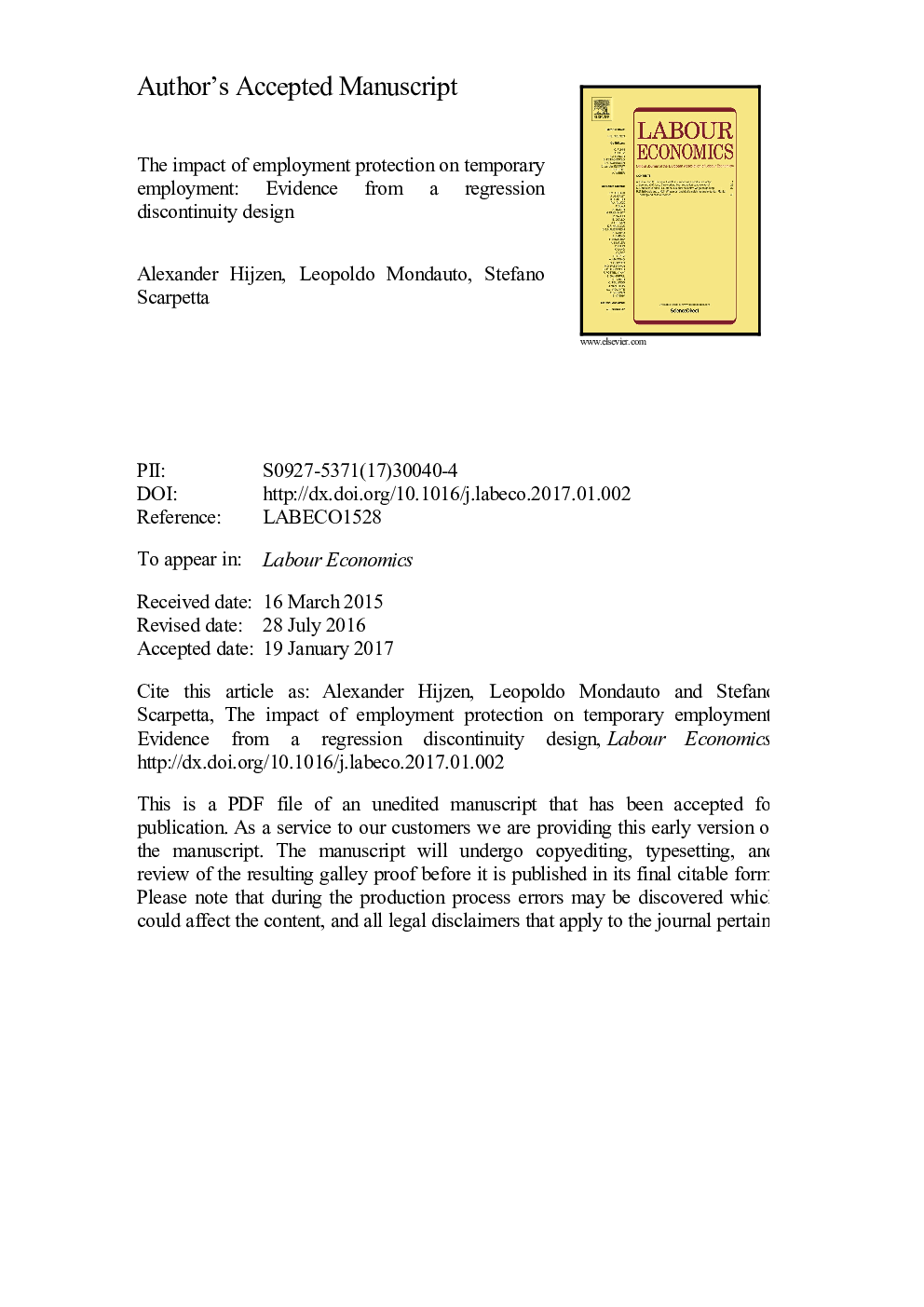| Article ID | Journal | Published Year | Pages | File Type |
|---|---|---|---|---|
| 5102075 | Labour Economics | 2017 | 49 Pages |
Abstract
This paper analyses the impact of employment protection (EP) on the composition of the workforce and worker turnover using a unique firm-level dataset for Italy. The impact of employment protection is analyzed by means of a regression discontinuity design (RDD) that exploits the variation in EP provisions in Italy across firms below and above a size threshold. We present three main findings. First, EP increases worker turnover, defined as the sum of hires and separations, thereby reducing rather than increasing worker security on average. Second, this can be entirely explained by the fact that firms facing more stringent EP make a greater use of workers on temporary contracts. Our preferred estimates suggest that the discontinuity in EP increases the incidence of temporary work by 2-2.5 percentage points around the threshold. Moreover, the effect of employment protection persists well beyond the threshold and may account for about 12% of the overall incidence of temporary work. Third, EP tends to reduce labour productivity. This is partly due to the impact of EP on worker turnover and the incidence of temporary work.
Related Topics
Social Sciences and Humanities
Economics, Econometrics and Finance
Economics and Econometrics
Authors
Alexander Hijzen, Leopoldo Mondauto, Stefano Scarpetta,
